Assembly Hall Building Melbourne. Camalot or Convict Architecture? Is Australia really 200yrs old?
Listen to this crazy #historyisalie# lie......
The foundation stone of the first purpose built church building was laid on 22 January 1841[2] and the church was opened on 3 October 1841. It was designed to seat 500 and the contract sum was £2,485 without plastering, gallery, vestry or fittings. The building was opened with temporary seating. Plastering was carried out the following year, proper pews, gallery and vestry were added in 1849 and a spire some years later.
James Forbes built a simple manse (minister's house) on the site where the Assembly Hall now stands and was later reimbursed. It was replaced by a two-storey manse in 1852 during the ministry of the Reverend Irving Hetherington.[3] The manse was sold to the General Assembly of the Presbyterian Church of Victoria for 5,000 pounds in 1897, and in 1914–15 the Assembly Hall was erected. In 2008 the Assembly Hall was bought by the Scots' Church Properties Trust to be renovated for use as congregational offices and meeting halls following the proposed demolition of The Scots' Church Hall in Russell Street and the heritage listed Scots' Church Car Park and the redevelopment of the site with a 10-story building.[4][5]
The first church building was demolished partly because of concerns that the tower and spire would collapse after it developed huge cracks and became crooked.[citation needed] During the ministry of the Revd Peter Menzies (1868–74) the building was too small for the congregation but, in any case, a building more suited to the site and the social position of the congregation was considered appropriate.
Current building
One of the stained glass windows at Scots, depicting the Parable of the Hidden Treasure and the Parable of the Pearl.
Planned to be "the most beautiful building in Australia", construction of the current building took place between 1871 and 1874,[2] during the ministry of the Revd Irving Hetherington and his colleague the Revd Peter Menzies, and was opened on 29 November 1874 with fixed seating for just under 1,000 people. It was designed by Joseph Reed of the firm Reed and Barnes,[2] and built by David Mitchell, the father of Dame Nellie Melba. Reed and Barnes also designed the Melbourne Town Hall,[2] the State Library of Victoria,[2] Trades Hall, the Royal Exhibition Building,[2] the Wesley Church in Lonsdale Street, the original Presbyterian Ladies' College in East Melbourne, and the Collins Street Independent Church, now St Michael’s Uniting Church, on the opposite corner of Russell Street.[2]
The Scots' Church is in the Neo-Gothic style and built of Barrabool freestone, with dressings in Kakanui stone from New Zealand.[6] During the last decades of the nineteenth century the spire of the Scots' Church was the tallest structure in Melbourne at 210 feet high. The interior features an impressive collection of large and smaller stained glass windows depicting various Christian themes including the Last Supper, basalt aisle columns, timber beamed roof and an elevated floor for a good view of the pulpit.
Laid up in the church are two sets of Regimental Colours of the Australian 5th Battalion, The Victorian Scottish Regiment, which include the honour LANDING at ANZAC.
The crest and flag of Australian prime minister Sir Robert Menzies are located near the lectern. Queen Elizabeth II was present for the presentation by Dame Pattie Menzies in 1983. Queen Elizabeth had been accompanied by Sir Robert in 1961 when they visited the Scots' Church to unveil a war memorial mosaic in the vestible near the entrance.[2]
#mudflood, #tartaria, #tartariaaustralia, #Tartarianhuntersmelbourne #historyisalie
Find us on Facebook:
https://www.facebook.com/groups/tartariaaustralia
-
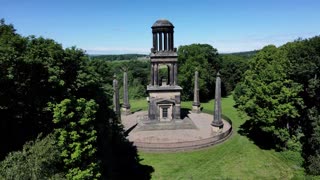 3:49
3:49
gaming,drone footage and bits
2 years agoHoober stand, Rockingham mausoleum Wentworth wood house
157 -
 35:10
35:10
Autodidactic
4 years agoTartarian Buildings in NSW Australia
971 -
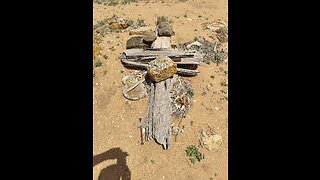 21:14
21:14
MAMysteryTours6470
11 months agoSwan Reach Flood and Cemetery South Australia
220 -
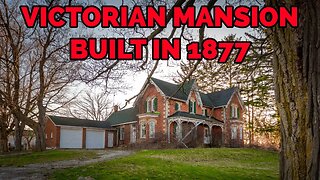 17:13
17:13
Freaktography - Abandoned Places and Urban Exploring
8 months agoVictorian Time Capsule: Abandoned Mansion Exploration (1877)
24 -
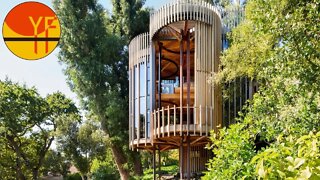 2:49
2:49
ArchitectClips
3 years ago $0.01 earnedTour In Tree House By Malan Vorster Architecture Interior Design In CAPE TOWN, SOUTH AFRICA
82 -
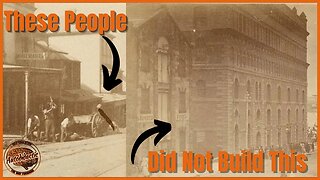 25:33
25:33
Autodidactic
11 months agoOld World Sydney - 18 Photos from the 1890's
6034 -
 17:35
17:35
DeadGoodWalks
1 year agoThe Time Machine In A London Cemetery | Brompton Cemetery
21 -
 28:03
28:03
MAMysteryTours6470
10 months agoMt Crawford Cemetery
150 -
 3:10
3:10
I provide top-notch, timely, distinctive, knowledgeable, consistent, engaging, informative, amusing, and professional information.
1 year agoAustralia - Unbelievable Wonders of the World Long
43 -
 0:51
0:51
ViralHog
2 years ago $0.37 earned'Treasure Trove of Artifacts' Found Behind Old Fireplace Mantel
6361